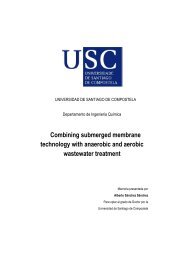FOREIGN DIRECT INVESTMENT - GROWTH NEXUS: A REVIEW ...
FOREIGN DIRECT INVESTMENT - GROWTH NEXUS: A REVIEW ...
FOREIGN DIRECT INVESTMENT - GROWTH NEXUS: A REVIEW ...
- No tags were found...
Create successful ePaper yourself
Turn your PDF publications into a flip-book with our unique Google optimized e-Paper software.
International Journal of Applied Econometrics and Quantitative Studies Vol. 4-2 (2007)augmentation of the level of knowledge through labor training andskill acquisition (de Mello 1997, 1999).In the framework of endogenous growth models, severalchannels are at work. More precisely, three main channels can bedetected through which FDI affects growth. First, FDI increasescapital accumulation in the receiving country by introducing newinputs and technologies (Dunning, 1993; Blomstrom et al., 1996;Borensztein et al. 1998). Second, it raises the level of knowledge andskills in the host country through labor and manager training (deMello, 1996, 1999). Third, FDI increases competition in the hostcountry industry by overcoming entry barriers and reducing themarket power of existing firms.As mentioned by Chowdhury and Mavrotas (2005), a largenumber of empirical studies on the role of FDI in host countriessuggest that FDI is an important source of capital, complementsdomestic private investment, is usually associated with new jobopportunities and enhancement of technology transfer and spillover,human capital (knowledge and skill) enhancement, and boostsoverall economic growth in host countries 1 . On the other hand, anumber of firm-level studies do not lend support for the view thatFDI promotes economic growth 2 .Concerning developing countries, macro-empirical work onthe FDI-growth relationship has shown that—subject to a number ofcrucial factors, such as the trade regime, the human capital base inthe host country, financial market regulations, banking system and1 See de Mello (1997, 1999) for a comprehensive survey of the nexusbetween FDI and growth as well as for further evidence on the FDI-growthrelationship, Mody and Murshid (2002) for a recent assessment of therelationship between domestic investment and FDI, Asiedu (2002),Chakrabarti (2001) and Tsai (1994) on the determinants of FDI, Blomstromand Kokko (1998) for a critical review of the role of FDI in technologytransfer, and Asiedu (2003) for an excellent discussion of the relationshipbetween policy reforms and FDI in the case of Africa.2 See Carkovic and Levine (2003) and the references therein. Hanson (2001)has found weak evidence that FDI generates positive spillovers for hostcountries. See Gorg and Greenaway (2004) for the comprehensivediscussion at the firm level.82
















